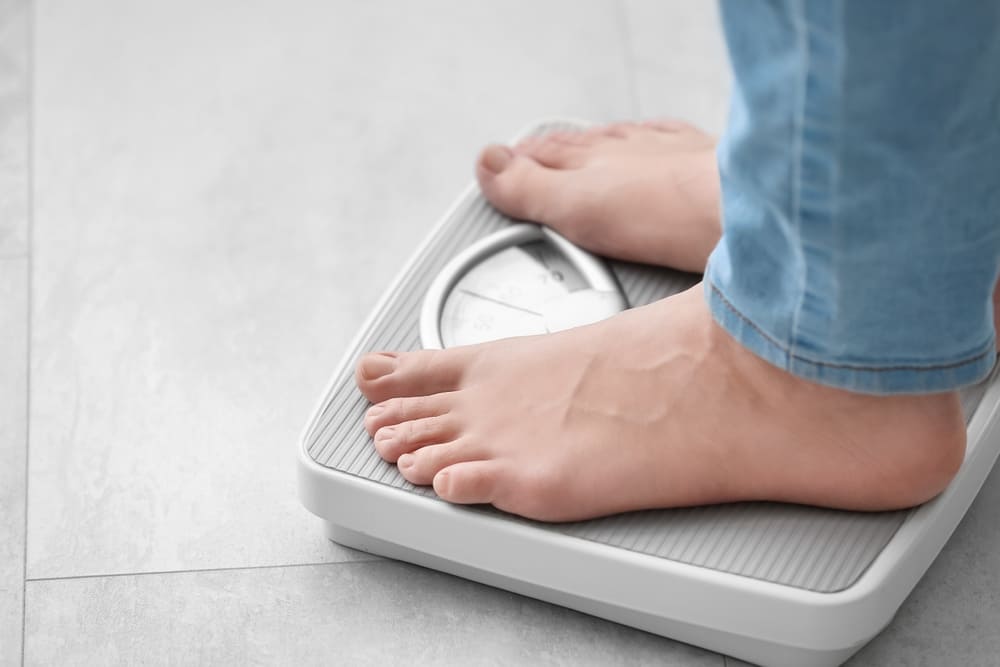Ever wonder how effective Farxiga is for losing weight? Have you heard of it? Dapagliflozin, popularly known as Farxiga has drawn interest for its ability to help with weight loss in addition to its role in managing diabetes. It has become more and more of a viable choice in recent years for those trying to lose weight. Many times we have witnessed people asking how rapid is weight loss with Farxiga?
In this blog, we will examine the mechanisms, advantages, and potential for how rapid is weight loss with Farxiga as a medication. Join us as we explore the details surrounding Farxiga’s weight loss potential, regardless of whether you’re inquiring about how it may affect your health journey or are thinking about incorporating it into your treatments.
What is Farxiga used for?
Farxiga is usually prescribed as a component of a comprehensive treatment plan for heart failure or diabetes that also includes exercise, diet, and other medications. Adults with type 2 diabetes mellitus can benefit from Farxiga by lowering their blood sugar levels. It is a member of the sodium-glucose co-transporter 2 (SGLT2) inhibitors drug class. These medications function by assisting the kidneys in eliminating glucose from the blood and excreting it in the urine, which lowers blood sugar levels.
Together with standard treatments, adults with heart failure (NYHA class II–IV) who have a reduced ejection fraction can use Farxiga to lower their risk of hospitalization for heart failure. This is in addition to its primary use in managing diabetes. Along With this in adults with or without type 2 diabetes who have established CKD stages 2-4 and who are at risk of disease progression, Farxiga has shown benefits in slowing the disease’s progression.
Does Farxiga cause weight loss?
When trying to seek an answer to How rapid is weight loss with Farxiga, one needs to look at the potential that even Farxiga causes weight loss or not. So the brief answer is yes, Farxiga can lead to weight loss. Farxiga was initially created to help people with type 2 diabetes lower their blood sugar levels.
However, by encouraging the excretion of glucose through urine, it can also reduce the body’s overall absorption of calories, which may help with weight loss. Research indicates that Farxiga may help persons with type 2 diabetes lose a small amount of weight, especially if they are obese or overweight.
How does Farxiga work for weight loss?

Farxiga is a member of the sodium-glucose co-transporter 2 (SGLT2) inhibitors drug class. It inhibits the SGLT2 receptors in the kidney’s proximal tubules. Reabsorbing glucose from the urine back into the bloodstream is done by these receptors. Blood sugar levels are lowered by Farxiga’s ability to block SGLT2 receptors, which permits the body to excrete extra glucose as urine.
Farxiga stimulates calorie excretion in addition to glucose. For every gram of glucose eliminated, four calories are lost. Therefore, a decrease in overall caloric intake is advantageous for weight loss and is facilitated by the increased excretion of glucose in the urine.
According to clinical trials, persons with type 2 diabetes who take Farxiga experience a slight reduction in body weight, especially if they are overweight. Weight loss can vary depending on individual characteristics like baseline weight and adherence to lifestyle modifications, but it usually happens within the first few months of treatment.
One secondary outcome of studies looking into the use of Farxiga in the management of heart failure has been weight loss. Rather than just being fat-loss, this weight loss is frequently linked to improved heart health and decreased fluid retention.
Factors Affecting Weight Loss Baseline Features:
- People who begin taking Farxiga with higher body weights or higher baseline blood sugar levels typically lose weight more quickly.
- When Farxiga is taken in conjunction with a nutritious diet and frequent exercise, its weight-loss effects are amplified. These alterations to the way of life optimize the calorie deficit and enhance general health results.
How rapid is weight loss with Farxiga?

When taking Farxiga, the kidneys eliminate extra glucose from the bloodstream and excrete it in the urine. This process burns calories in addition to lowering blood sugar levels, which helps people lose weight. Since each gram of glucose expelled equals about 4 calories, the calorie loss linked to Farxiga varies but can be significant.
Research indicates that with Farxiga, weight loss usually starts in the first few weeks of treatment and lasts for several months. Individual outcomes may differ, even though Farxiga can eventually result in noticeable weight loss. Remaining realistic is key, and you should be aware that sustained weight loss usually happens gradually.
Clinical trials demonstrated that individuals taking Farxiga alone, either at a daily dosage of 5 mg or 10 mg, experienced an average weight reduction of approximately 6 pounds over 24 weeks. Additionally, studies indicated that combining Farxiga with metformin, another medication for type 2 diabetes, resulted in an average weight loss ranging from 6 to 7 pounds within the same timeframe.
Farxiga contributes to overall wellness by reducing weight and providing extra health benefits like improved blood sugar regulation and cardiovascular outcomes. Dehydration may result from Farxiga’s increased urinary glucose excretion. When taking this medication, it’s critical to keep a sufficient fluid intake and to keep an eye on your level of hydration.
To evaluate the efficacy of treatment, control possible side effects (such as urinary tract infections), and modify dosage as necessary for the best results, regular monitoring by healthcare professionals is essential.
Farxiga with or without food: Dietary Modifications

It’s essential to know how to manage the use of Farxiga (Dapagliflozin) in the context of food intake. Usually taken once daily, Farxiga can be taken with or without food. Depending on tolerance and personal tastes, one may choose to take it with or without food. To help remember their daily dosage, some people might find it more convenient to take Farxiga with meals, while others might prefer to take it on an empty stomach.
Meals’ Influence on Farxiga:
- When taken orally, Farxiga is quickly absorbed into the digestive system. Consumption of food has no discernible effect on its effectiveness or absorption.
- Consuming food while taking Farxiga may lessen the chance of experiencing gastrointestinal distress, which some people may experience, such as nausea or upset stomach.
To keep your blood levels of Farxiga stable, it is generally advised to take the medication at the same time every day, with or without food. Talk to a registered dietitian or your healthcare provider about any dietary concerns or changes. Based on your health status and desired course of treatment, they can offer tailored recommendations.
Conclusion:
In conclusion, individual factors including starting weight, diet, exercise routine, and general health state can affect how quickly and effectively Farxiga (dapagliflozin) helps with weight loss. According to clinical studies, Farxiga, especially in people with heart failure or type 2 diabetes, can eventually result in a slight reduction in body weight. The drug’s mode of action, which encourages the kidneys to excrete glucose, helps people lose weight gradually and reduces calories.
It’s crucial to have reasonable expectations even though some people might lose noticeable weight in the first few weeks of treatment. When diet changes, regular exercise and consistent adherence to treatment are made, sustainable weight loss frequently happens gradually. Beyond helping people lose weight, Farxiga also improves cardiovascular health, glycemic control, and general well-being.
It’s critical to speak with a healthcare professional before taking Farxiga to lose weight to determine how rapid is weight loss with Farxiga, its suitability, set individualized goals, and guarantee thorough management of heart failure or diabetes. A balanced diet, plenty of water, and lifestyle changes combined with Farxiga can help people reach long-term sustainable weight management goals and improve their overall health.
FAQs:
Is Farxiga safe?
Farxiga is generally regarded as safe when taken as directed by medical professionals. Nevertheless, it carries the same risks and adverse effects as other medications, such as dehydration, UTIs, hypoglycemia, or low blood sugar in diabetics. However, it is advised to check with your healthcare physician before indulging in medical use
Does Farxiga help burn fat?
Dapagliflozin, the active ingredient in Farxiga, primarily encourages weight loss by excreting glucose in the urine, which can result in a decrease in total caloric intake. Although its mechanism mainly targets glucose metabolism instead of burning fat directly, it may help with weight loss. Therefore, Farxiga is not intended to be a medicine that burns fat, even though it can help with weight management.
Does Farxiga cause weight gain?
No, there is no evidence that Farxiga leads to weight gain. Because it promotes glucose excretion through urine, it causes modest weight loss in many people, especially those with heart failure or type 2 diabetes.
Can Farxiga be combined with other weight-loss medications?
It is advisable to take Farxiga in combination with other weight-loss drugs under a doctor’s supervision and guidance. Ensuring compatibility, keeping an eye out for possible interactions or side effects, and adjusting dosages as needed are crucial for safe and efficient weight management.
What Foods to avoid when taking Farxiga?
It’s usually advised to limit your intake of foods high in refined sugars and carbohydrates when taking Farxiga. In addition to Farxiga therapy, maintaining a balanced diet and regular carbohydrate intake can help maximize blood sugar control.
Does Farxiga cause constipation?
No, constipation is not usually a side effect of Farxiga. Urinary tract infections, dehydration, and possibly low blood sugar in diabetics are more closely related to its main adverse effects. However, if you witness any unusual side effects do speak with your Physician.


